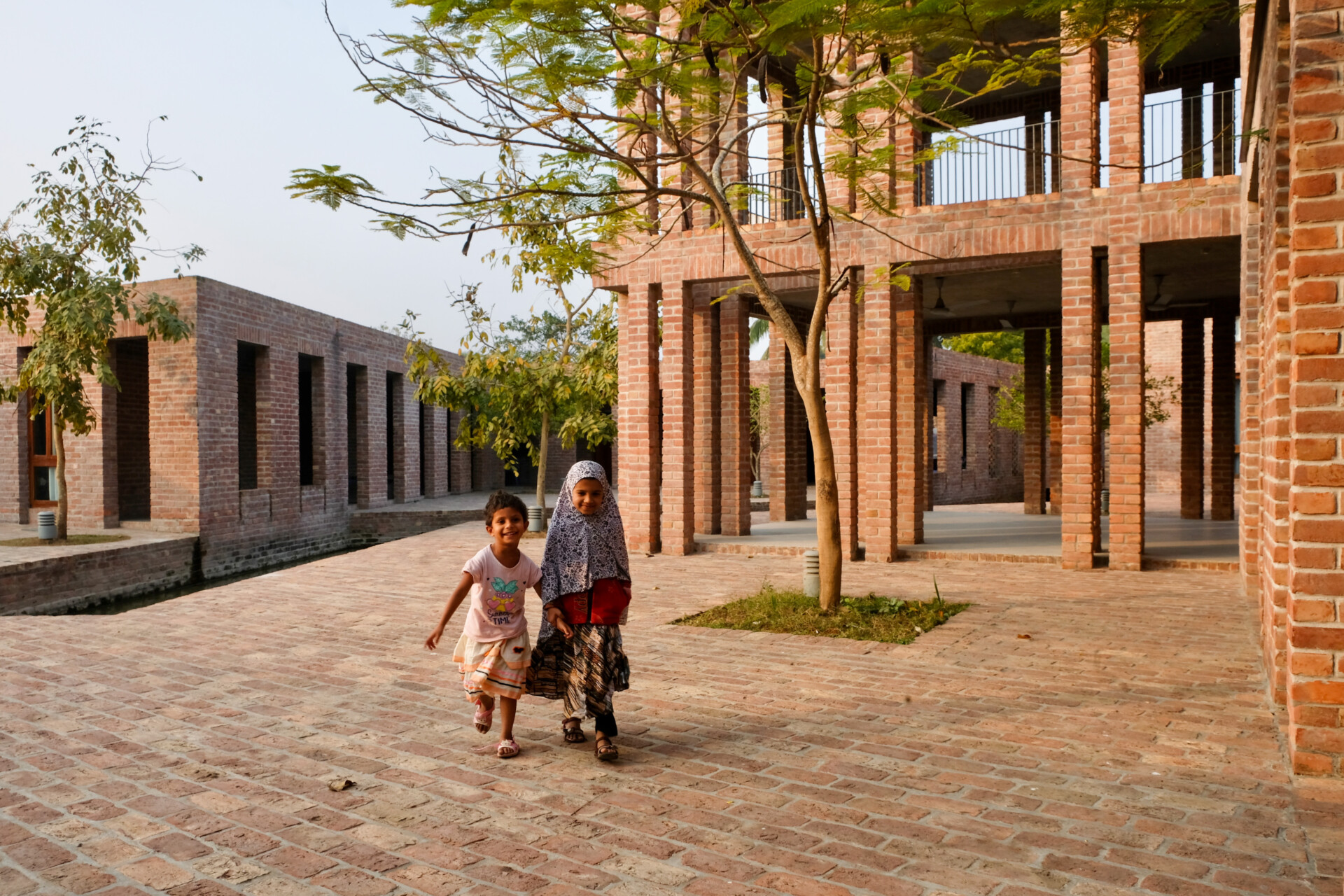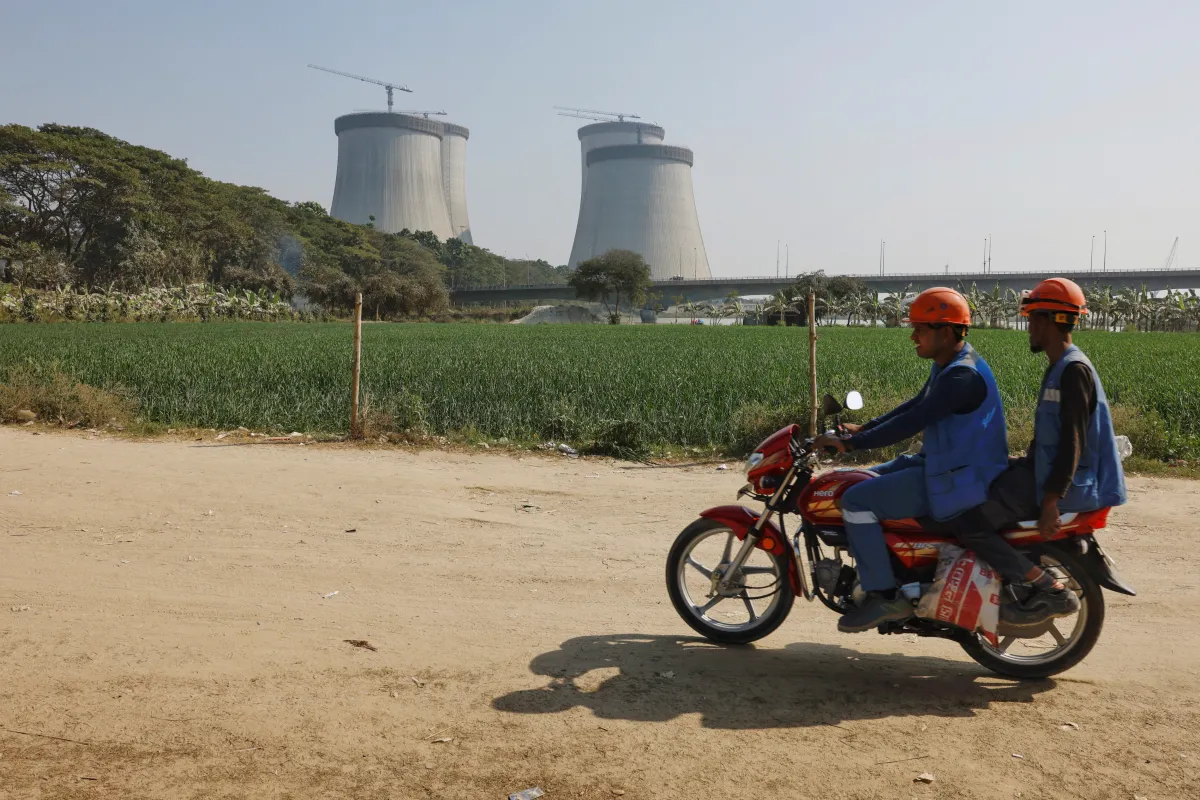Bangladesh architects revolutionize climate-resilient design
Ancient wisdom meets modern innovation as designers abandon Western models for flood-ready future
Arthur Rahman
EcoBangla Correspondent
September 2, 2025
767
0

DHAKA - While government utilities collapse under climate pressure, Bangladesh's architects are quietly engineering a revolution. From floating houses that move with monsoon floods to brick hospitals that laugh at rising seas, they're proving that adaptation isn't about expensive technology—it's about respecting what nature has always taught. In Sunamganj, near the Indian border, Rakiba Begum points to her waist: "Every year during the monsoon, the water comes up to here. Sometimes when it floods, we live on boats for several months. The entire village goes underwater." But now Rakiba has something new: a "khudi bari" (small house) designed by award-winning architect Marina Tabassum. The structure has steep sloped roofs, rests on high stilts and is built with locally sourced materials like bamboo and corrugated steel. It is easily assembled and disassembled and can be moved to safe locations during the monsoon. "It is like a piece of furniture. When you move, you take your house with you," explains Tabassum from her Dhaka office. Abandoning the Western Obsession The revolution extends beyond flood-prone villages. Marina Tabassum, featured among Time magazine's 100 most influential people of 2024, prioritizes "local cultures and values, as well as the perils faced by our shared planet." Her minimalist Bait Ur Rouf Jame Mosque on Dhaka's outskirts deliberately rejects air conditioning and glass facades—Western impositions that make no sense in Bangladesh's climate. In coastal Satkhira, architect Kashef Chowdhury's brick hospital proves that climate adaptation can be beautiful. The building has large, glassless windows that blur the border between indoors and outdoors, with a lightning-shaped canal running through the middle that collects rainwater and creates a microclimate to cool the space. In 2021, the Satkhira Hospital won the prestigious RIBA International Prize for being "very relevant to critical global challenges" as a "celebration of a building dedicated to humans." Hospital director Mozahedul Hoque explains the practical benefits: "The brick is treated to not be destroyed by the salty water. And ventilation flows in a way so that we don't feel the worst summer heat." Rejecting Glass Towers for Natural Solutions Urban planner Neaz Rahman took the radical step of "trying to forget all of that" architectural training when building his family home in rural Faridpur, using only traditional methods and materials. Rahman refused to install air conditioning, instead designing natural airflow: "I studied traditional ventilation to understand how people managed heat and humidity before so-called modern technology." He avoided large windows because "Glass is a bad solution for Bangladesh's climate, since it traps the heat inside." His critique cuts deep: "We have messed up big time with all the glass. Like installing sliding windows that cannot open. This works well in cold countries but not here." Community-Led Innovation In Jhenaidah, primary school teachers Alamgir and Selina Kabir are building a community center using packed gray mud foundations, working alongside architects Hasibul Kabir and Suhailey Farzana in what they call "co-creation." "We are just two architects living here and participating in people's projects. Whatever we do comes from everyone. In fact, we consider everyone working together here as an architect," says Hasibul. Their work earned the prestigious Aga Khan Award for Architecture in 2022 for restoring Jhenaidah's riverbank using terracotta-colored bricks, transforming it into a beloved public space. Global Recognition for Local Wisdom These projects aren't just regional curiosities—they're leading global conversations about sustainable design. The construction sector contributes 37% of global emissions, making architects crucial players in climate action. International architects are taking notice. From Burkina Faso's compressed earth bricks to Pakistan's "barefoot social architecture" using bamboo and mud, designers worldwide are abandoning energy-intensive materials for locally sourced alternatives. Young architect Khwaja Fatmi, who worked on refugee housing in Cox's Bazar, believes others can learn from Bangladesh: "I think something that others can learn from Bangladesh is how our practice is grounded in our surroundings. Our solutions come from what happens around us." Fighting Back Against Climate Colonialism The broader implications are profound. While wealthy nations export carbon-intensive architectural models globally, Bangladesh's architects are proving that climate resilience comes from working with nature, not against it. Tabassum calls brick Bangladesh's "own material," noting that "brick has a beautiful, graceful way of aging. And aging is important in architecture." This philosophy directly challenges the Western obsession with glass and steel structures that require massive energy inputs to remain habitable. The approach extends to refugee settlements, where architects used water reeds, nipa palm leaves and bamboo to build women-friendly spaces and cultural centers in Cox's Bazar, creating architecture that "might not look architectural at first, but they are real architectural interventions that people need." Lessons for a Burning World As climate disasters intensify globally, Bangladesh's architectural revolution offers crucial lessons. Traditional building techniques that seemed "backward" to development experts are proving more resilient than imported modern methods. In rural Faridpur, Rahman discovered the value of local knowledge when digging a pond: "A man working with me said, 'Don't dig deeper than 8 feet.' But I wanted to do it the way I had researched, so I didn't listen to him. It was a disaster." The message is clear: centuries of lived experience in climate-vulnerable regions contain wisdom that no engineering degree can replace. The Future of Climate-Smart Design Tabassum warns that Dhaka has become "unlivable to the point of unlivable," but sees hope in rural innovation: "When we build outside Dhaka, we can set a certain kind of example. People have the idea that you should follow Dhaka, that 10-story towers are the symbol of progress. We need to find ways to remain very natural and at the same time have all the facilities." This represents more than architectural innovation—it's a complete reimagining of what progress looks like in the climate era. Bangladesh's architects aren't just adapting to climate change; they're showing the world how to build a future that works with nature instead of fighting it. Their message resonates far beyond South Asia: the solutions to climate catastrophe won't come from air-conditioned boardrooms in wealthy capitals, but from communities that have always known how to live with water, wind, and weather.
You Might Also Like

Nr.1 Corrupted Country Russia Refutes Corruption Allegations in Bangladesh Power Project

Rosatom derails Bangladesh's energy transition to renewable energy
Comments (0)
Please sign in to leave a comment
Join the conversation and share your thoughts!
No comments yet
Be the first to share your thoughts!
Popular Articles
Discover trending eco-news and popular articles from our community.
